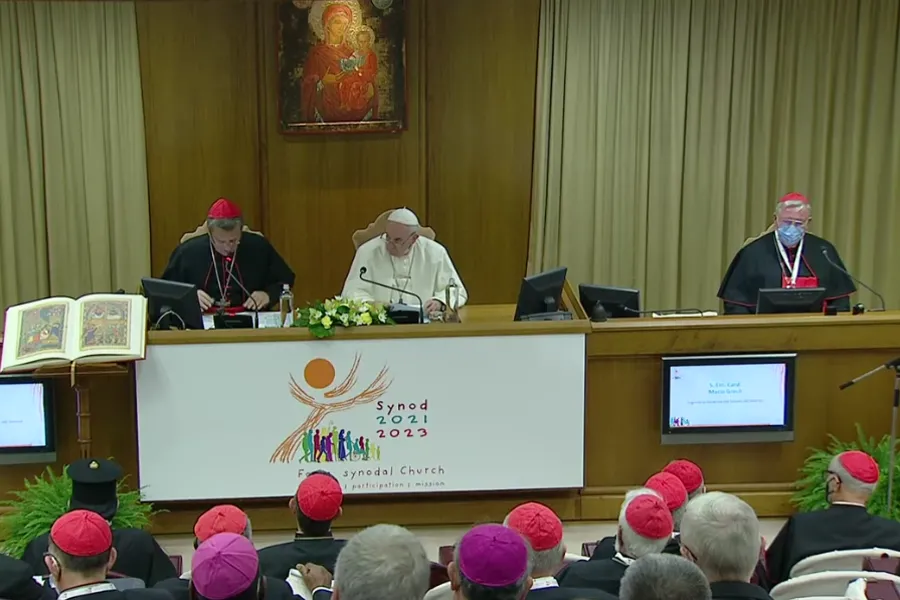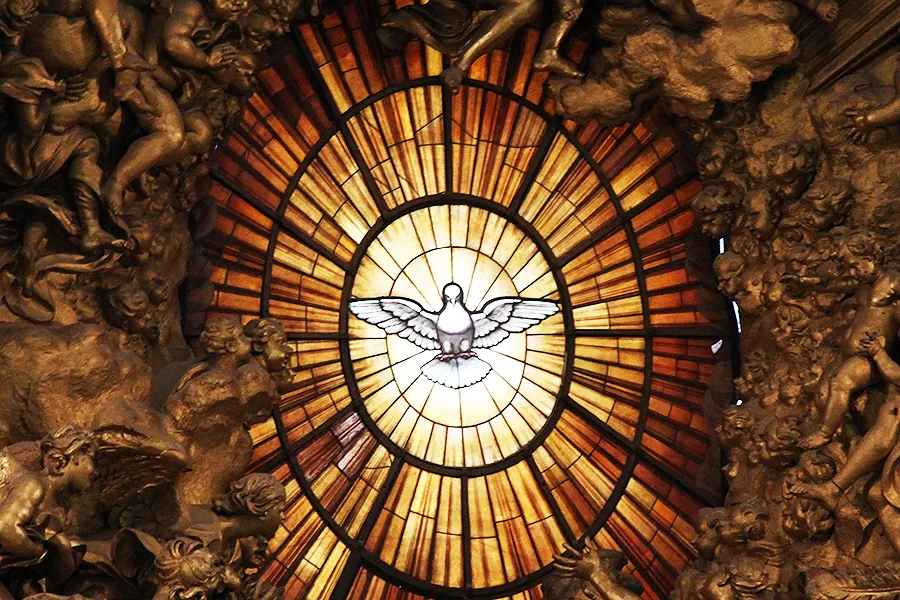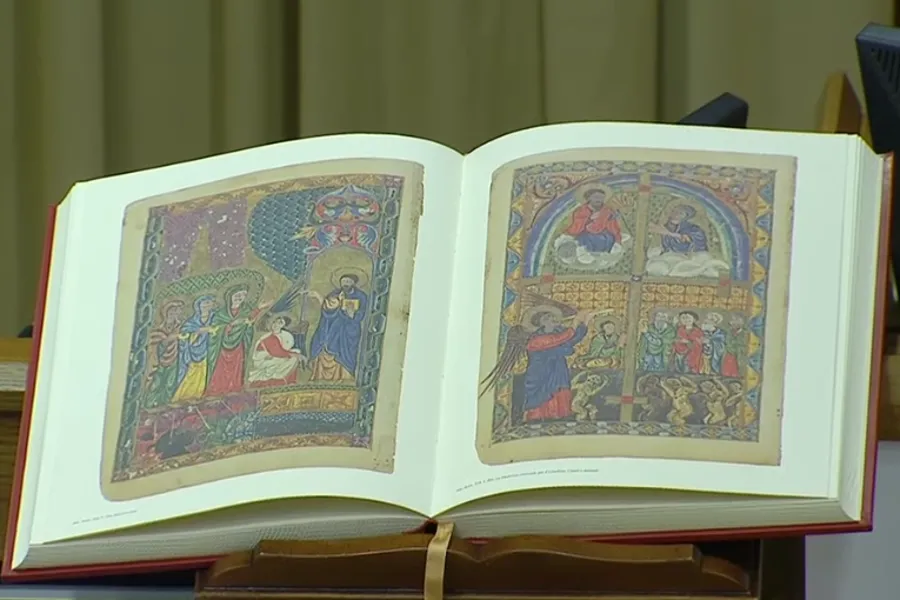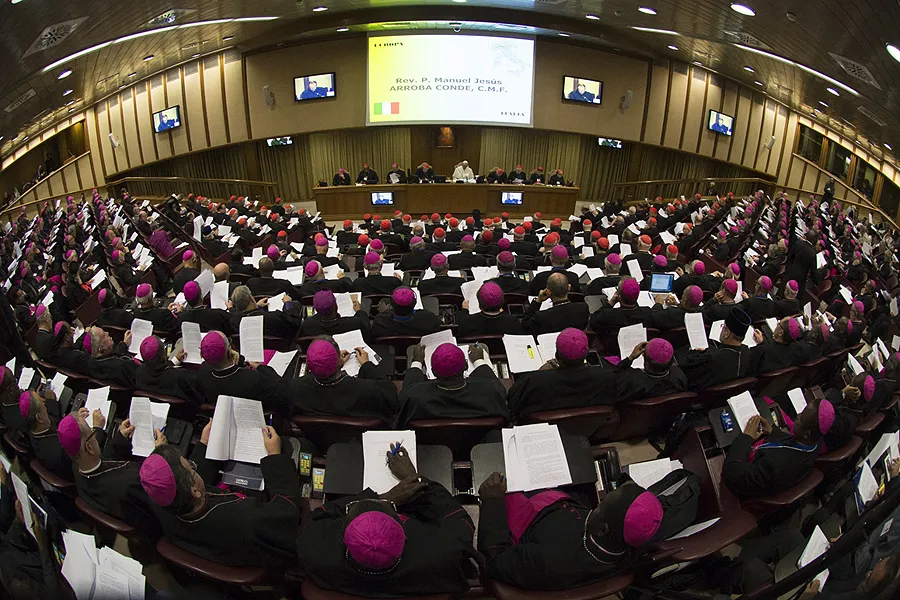
London, England, Oct 15, 2021 / 03:00 am (CNA).
This weekend, dioceses in the U.S. and around the world will formally launch a local consultation process leading to the 2023 synod on synodality in Rome.
Supporters bill it as one of the most important events in the Catholic Church since the Second Vatican Council and the greatest consultation exercise in human history.
But as the diocesan phase of the ambitious two-year project begins, many Catholics are either wholly unaware of the “synodal path” or unsure of its significance.
The synodal process starts with a diocesan consultation lasting from October 2021 to April 2022. A second, continental phase will take place from September 2022 to March 2023.
The third, universal phase will begin with the XVI Ordinary General Assembly of the Synod of Bishops, on the theme “For a Synodal Church: Communion, Participation, and Mission,” at the Vatican in October 2023.

The process will be guided by two texts — a preparatory document and handbook — released last month by the Vatican.
But at an event in Rome last weekend, Cardinal Mario Grech, the secretary general of the Synod of Bishops, said it would be wrong to see the texts as an attempt to dictate the direction of the global process. The cardinal explained that the documents were not intended to “pre-establish the conditions of the path or dictate the way, obliging the Church to follow a path established in advance.”
With that caveat noted, CNA asked theologians what the preparatory documents tell us about where the synodal path could lead.
While they expressed enthusiasm about the synod on synodality’s potential for renewal, they voiced reservations about the vagueness surrounding its ultimate goals, the preparatory texts’ theology, and the timing of the process.
The promise of synodality
Christopher Ruddy, an associate professor of historical and systematic theology at the Catholic University of America in Washington, D.C., said that there was “a lot that’s really commendable” in the texts.
“To be trying to foster deeper communion in the Church, deeper participation, greater mission — those three goals are all really worthwhile,” he told CNA in a phone interview.
“I think that sense of co-responsibility — that all of the faithful are called to take an active part in the life and mission of the Church — is something that’s really important and is still a work in progress.”
He added: “The emphasis on listening and discernment, and trying not to reduce the synod to a parliament or political struggle, is really good.”
Fr. Thomas Weinandy, O.F.M. Cap., a former member of the Vatican’s International Theological Commission, praised the global scope of the synodal process.
“It could enliven not only the local churches but the entire worldwide Church,” he told CNA via email.
“[Through] a global growth in faith through the working of the Holy Spirit, Jesus would more fully be called Lord of all of the world to the glory of God the Father.”
“Also, the faith of the Church could be confirmed and strengthened and people could be helped to live holy lives. It could enliven a whole worldwide evangelization. All of this would be marvelous to behold.”

Images of the Church
Ruddy, who teaches a course on Vatican II, noted that the preparatory document seeks to root the synodal path in the ecumenical council held in Rome in 1962-65.
“It’s very clear that it’s placing itself in a sort of trajectory of Vatican II and the idea that the Church is a pilgrim People of God journeying towards the Kingdom,” he said.
“And of course that’s conciliar teaching and it’s scriptural, but there are other things that don’t get emphasized as much in terms of looking at the Church, like the images of the Church as the Body of Christ or the Temple of the Holy Spirit, or even the Bride of Christ.”
“These are all obviously legitimate and valid ways of looking at the Church, but they bring out different emphases. I think that sometimes when you’re emphasizing one dimension of the Church, or one image, it has its strengths but also its limits.”
Ruddy said that highlighting the image of the Church as a people “walking together” (the origin of the word “synod”) raised the question of “where it is journeying to.”
“I think there needs to be a clear sense of the goal here. I think of that line, ‘it’s not the destination, it’s the journey,’ and I’ve never liked that. When you’re on a journey, you need to be surprised sometimes by that, but you do need to have a sense of why you’re doing this and where you’re ultimately heading.”
He added: “Even granting that this document is just trying to get something going, I think it’s still important to have a sense ultimately of where you’re going, so that it doesn’t just become amorphous.”
Referring to the Bible, he noted that when the Israelites were in the desert, they were seeking the Promised Land, and when people went up to Jerusalem in Jesus’ time, they did so for a definite purpose.
“They weren’t just trying to journey together, they were trying to go somewhere,” he commented.

Consulting all the baptized
The synod on synodality’s handbook urges dioceses to include “all the baptized” in the process.
It says: “Special care should be taken to involve those persons who may risk being excluded: women, the handicapped, refugees, migrants, the elderly, people who live in poverty, Catholics who rarely or never practice their faith, etc.”
Ruddy said it made sense to consult those who no longer take part in Church life, just as a company would seek to listen to dissatisfied customers so it could improve its service.
“You’d be like, ‘OK, what are we doing wrong? What can we improve? What are we missing here?’” he said.
“But if it’s used as a way to almost privilege those voices, as the document says, I think, in a couple of places, that can lead in a problematic direction.”
Weinandy, the former executive director of the U.S. bishops’ secretariat for doctrine, also expressed concern about this aspect of the process.
He said: “It would appear that everyone, even non-Catholic, can express their various opinions on a whole variety of topics both concerning doctrine, liturgy, and morals. However, if such opinions are contrary to the faith of the Church, and these opinions are loudly proclaimed, then chaos will ensue.”
He offered the German “Synodal Way” as an example of what happens when Church teaching is put up for debate.
“As the Synodal Path in Germany has created a mess, so the global synodal path could create an ecclesial worldwide mess. I hope that this does not happen, but this is what I fear,” said Weinandy, who has previously criticized the German initiative.

The role of the Holy Spirit
The Holy Spirit is critical to Pope Francis’ understanding of synodality. As he put it last weekend, “the synod is an ecclesial event and its protagonist is the Holy Spirit. If the Spirit is not present, there will be no synod.” The 60-page handbook mentions the Holy Spirit 50 times.
Ruddy noted that the Spirit is often spoken of nowadays as the impulse for change in the Church, but that the Third Person of the Trinity also acts in other ways.
“Sometimes the Holy Spirit makes something clear that we didn’t see before and that the Church can develop in that sense,” he reflected.
“But there’s another way in which the Holy Spirit is something that is given to the Church. Both, I’d say, to all the faithful to awaken the sense of the faith and also to the Church leaders, to teach and lead.”
“And so the Holy Spirit can’t always be associated with ‘Oh, something new is happening,’ a kind of rupture.”
“It’s also in this sense that the Holy Spirit is the Spirit of Jesus,” he said, “and that it has not just this sort of disruptive role but a confirming role as well. The Spirit is not a spirit of disorder, of chaos. It’s a spirit of peace and of order as well.”
Weinandy encouraged Catholics to pray that the Holy Spirit guides the synodal process.
“We must pray that the Holy Spirit enlightens all who attend these meetings, and especially the bishops, clergy, and faithful laity (the sensus fidelium) so that these gatherings do not get hijacked by the devil,” he said.
“Of course, we must remember that the Lord works good in all situations for those who love him. Some may see this as an opportunity to undermine the Church and her faith, but it could be an opportunity for all faithful believers to bear witness to the faith and be strengthened in so doing. The crucified and risen Jesus would then shine gloriously throughout the world.”

A missing call?
Ruddy added that he was interested in “what’s not being said” in the synod texts.
For example, he said, the Second Vatican Council emphasized the “universal call to holiness.” A whole chapter of Lumen gentium, the Dogmatic Constitution on the Church, was dedicated to the notion that “all the faithful of Christ of whatever rank or status, are called to the fullness of the Christian life and to the perfection of charity.”
While the preparatory document rightly stressed participation and co-responsibility, he said, “I don’t think it really took up the fact that the Vatican II spoke very essentially about the universal call to holiness.”
“Participation is a part of that holiness, but it’s not just trying to get people more active in the Church, it’s that we want them to do all this because we want them to be more closely united to God and sharing God’s life,” he said, while acknowledging that “no document can say everything.”

Practical challenges
Writing at the National Catholic Register, Fr. Raymond J. de Souza noted that the Vatican is asking dioceses to organize “the most massive set of meetings ever conducted in the history of the Catholic Church” during a global pandemic.
“No one had heard of this idea 120 days ago, when it was first announced, and the official guidance comes less than 60 days before launch,” he wrote on Sept. 17.
“Most sacramental-preparation classes are more extensively prepared than that.”
Ruddy said that dioceses already conducting some kind of synodal process — such as the archdiocese of Saint Paul and Minneapolis — would have a head start in responding to the Vatican’s requests.
He suggested that the coronavirus pandemic’s toll on parish life should not be underestimated.
“People are wiped out by COVID,” he observed. “I don’t even mean just physically but, you know, people are weary. People are just trying to get back on their feet, trying to keep parishes open and do all of that. And the idea of now organizing meetings when we don’t even have social hours in our parishes anymore…”
“How are you going to have listening sessions, and so forth? It’d be hard to begin with, but I think the COVID situation makes things a lot trickier right now.”
If you value the news and views Catholic World Report provides, please consider donating to support our efforts. Your contribution will help us continue to make CWR available to all readers worldwide for free, without a subscription. Thank you for your generosity!
Click here for more information on donating to CWR. Click here to sign up for our newsletter.




From Christopher Ruddy, an assistant professor of theology at the Catholic University of America, we read: “I think there needs to be a clear sense of the goal here. I think of that line, ‘it’s not the destination, it’s the journey,’ and I’ve never liked that.”
But what if the goal is abundantly clear? Between the lines…
What if the process itself IS the new goal and content? Folding chairs reaching beyond the horizon, replacing a sadly folding Church? An ecclesial process mimicking the lay-Catholic Marshall McLuhan who discovered over half a century ago that today in the secular world: “the medium is the message” (1964)?
To what extent might the Synod on Synodality actually disinter Lutheranism into a rolling Vatican III?
The breezy “spirit of Vatican II” fully detached from the Documents? The “virtual” council fully displacing the “real” council? The Holy Spirit uncaged from His own (“rigid and bigoted”) Magisterium?
Is collegiality still institutional, with the college of bishops “[t]ogether with its head, the Roman Pontiff, and never without this head?” (Lumen Gentium, Ch. 3, n. 22, and the Explanatory Note.)? Or. instead, now an open-door “freedom” toward a pandemic “synodal path” imported from Germany, duty-free, so to speak?
The commentators note the potential for good but, for this reader, at least, their reservations carry more weight.
This is of deep concern:
Weinandy, the former executive director of the U.S. bishops’ secretariat for doctrine, also expressed concern about this aspect of the process.
He said: “It would appear that everyone, even non-Catholic, can express their various opinions on a whole variety of topics both concerning doctrine, liturgy, and morals. However, if such opinions are contrary to the faith of the Church, and these opinions are loudly proclaimed, then chaos will ensue.”
He offered the German “Synodal Way” as an example of what happens when Church teaching is put up for debate.
The general lack of planning, and emphasis on the journey rather than the destination, along with the danger of ‘German Synodal Way’ may cause this effort to become derailed. What has transpired so far during this Pope’s tenure has caused confusion. Prayerfully hope that this endeavor has a better outcome.